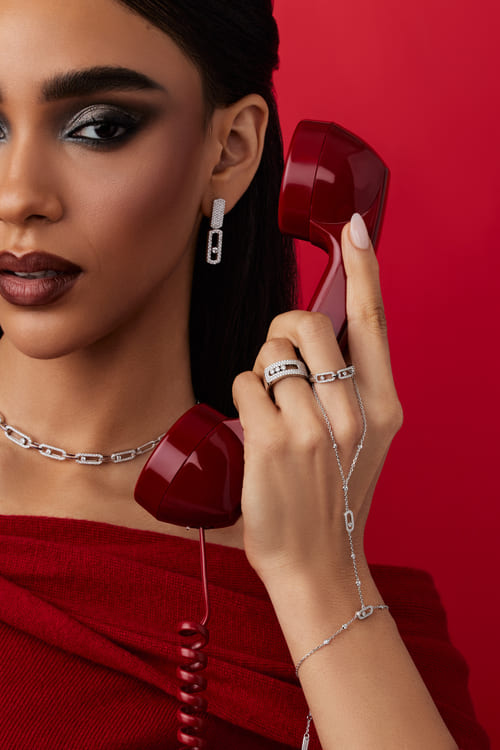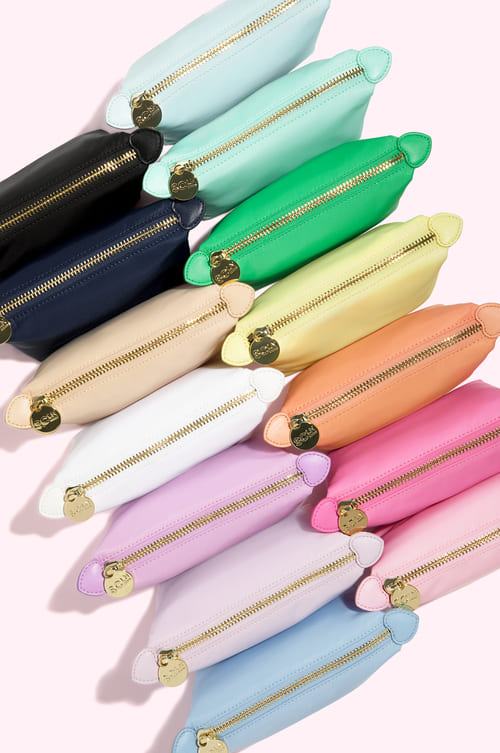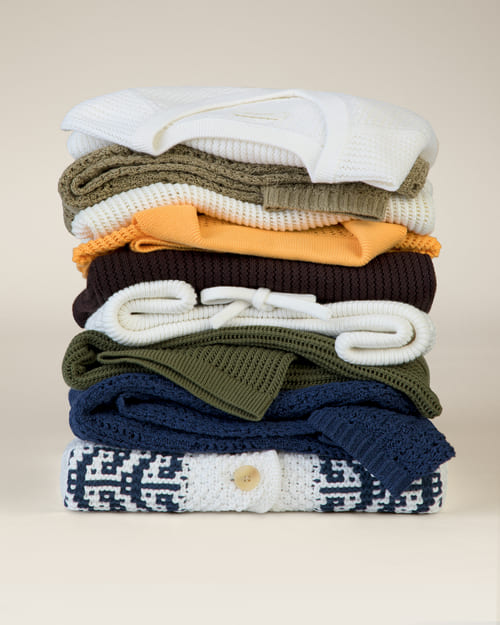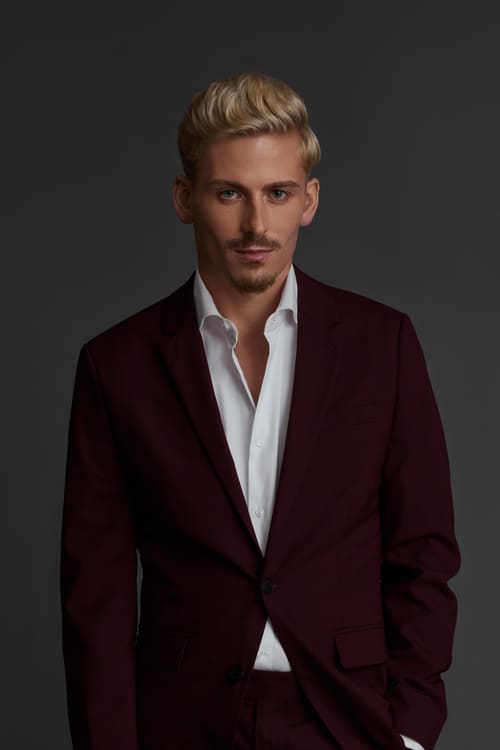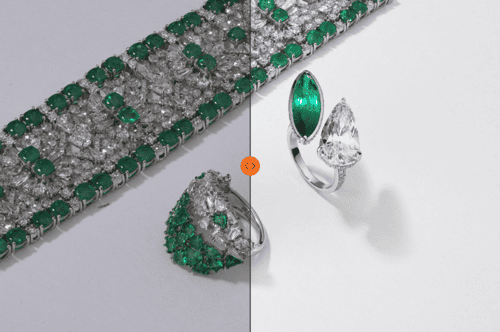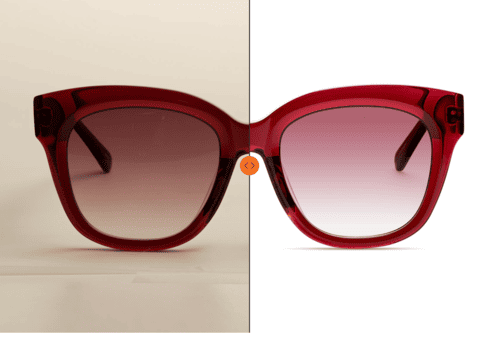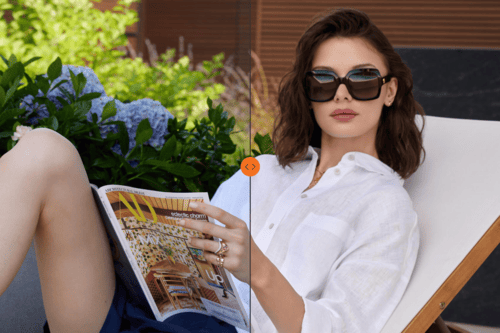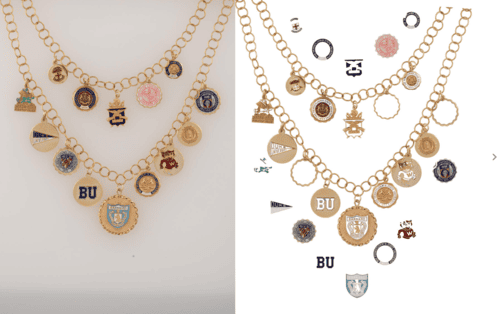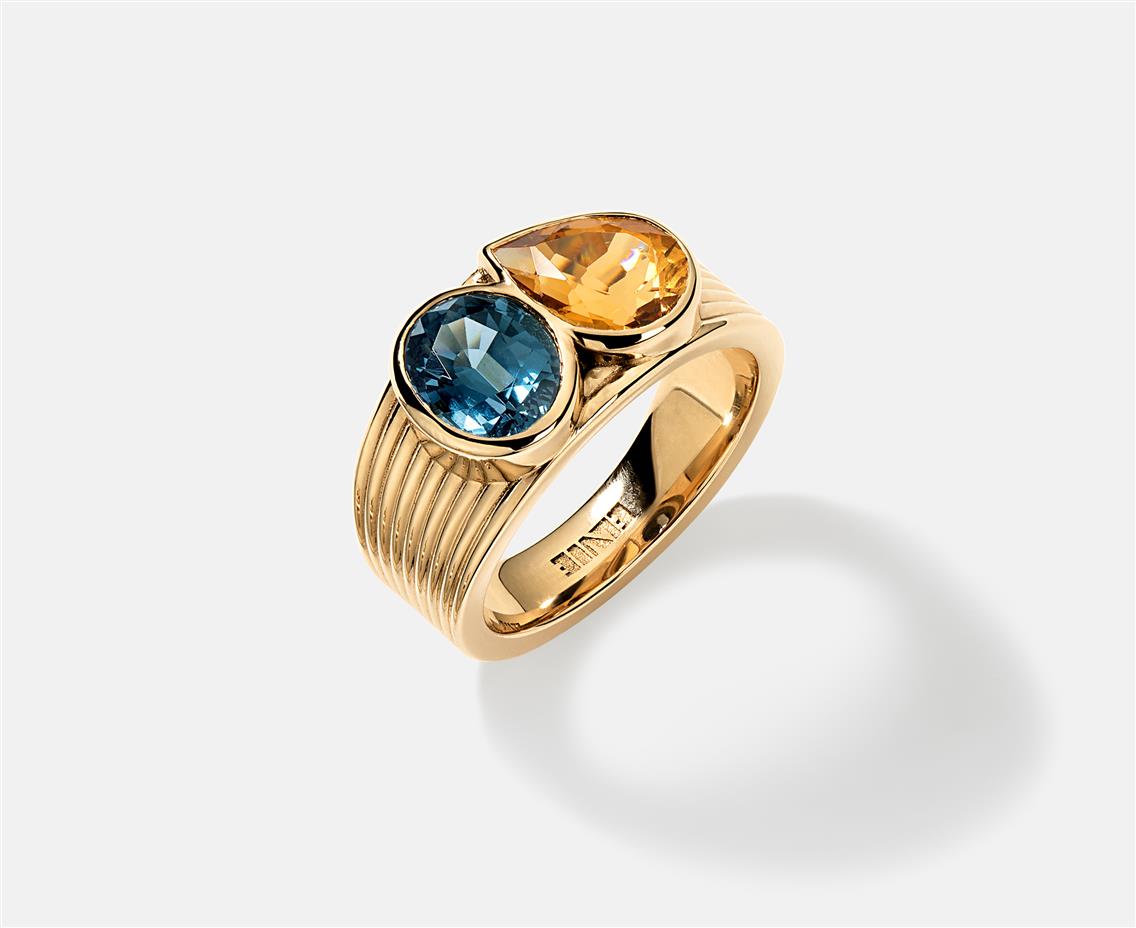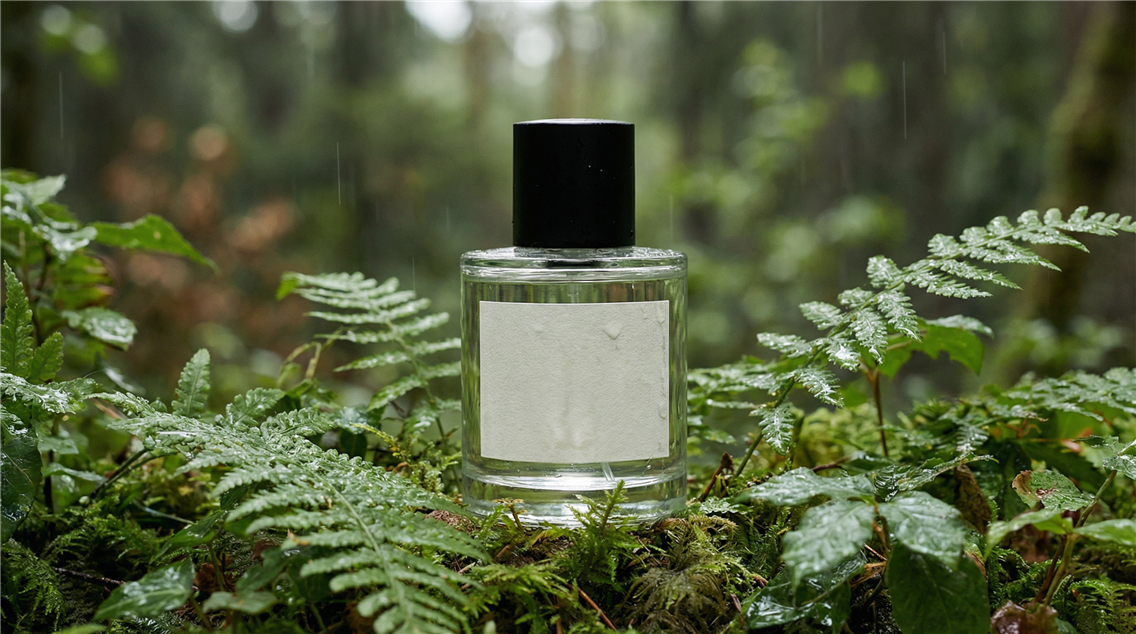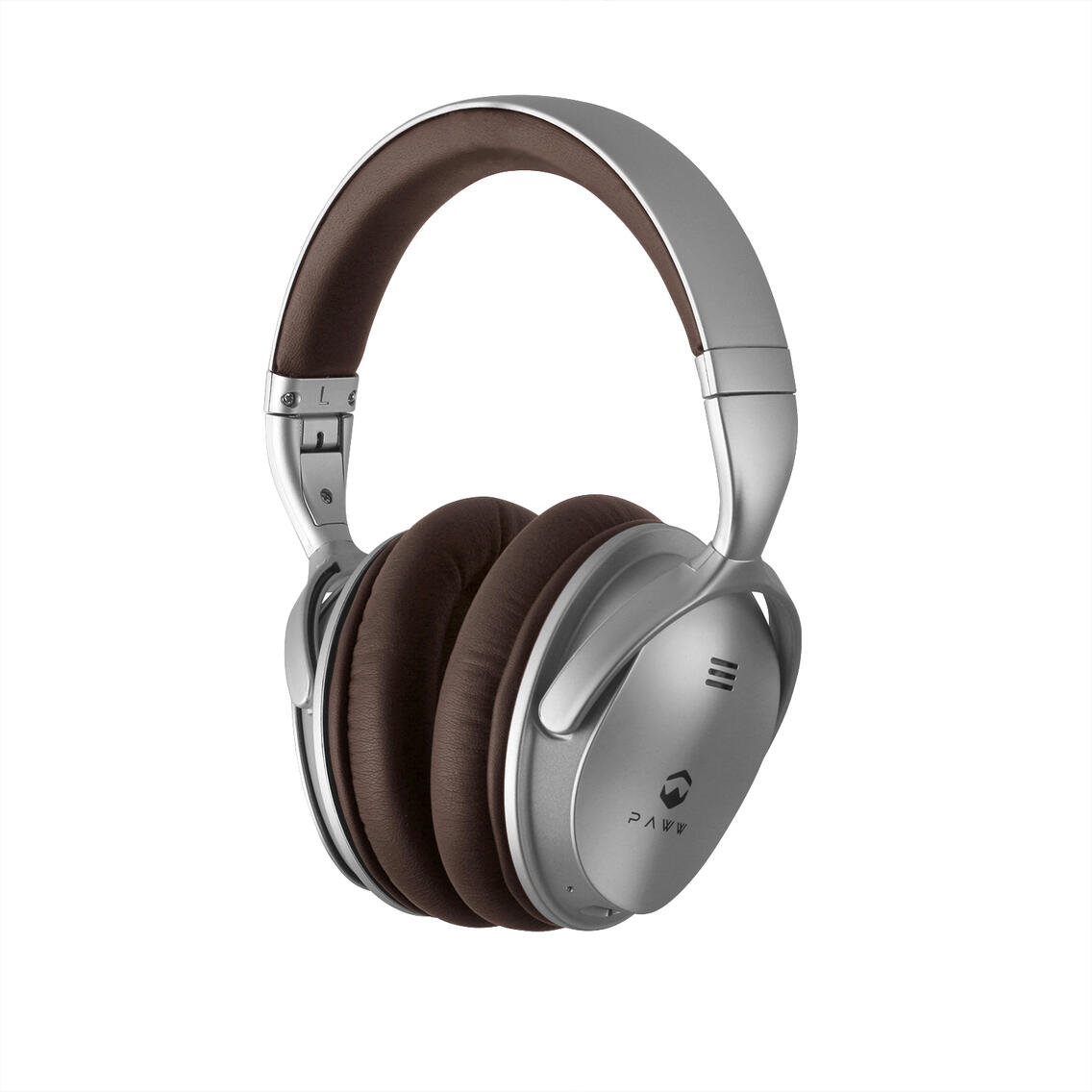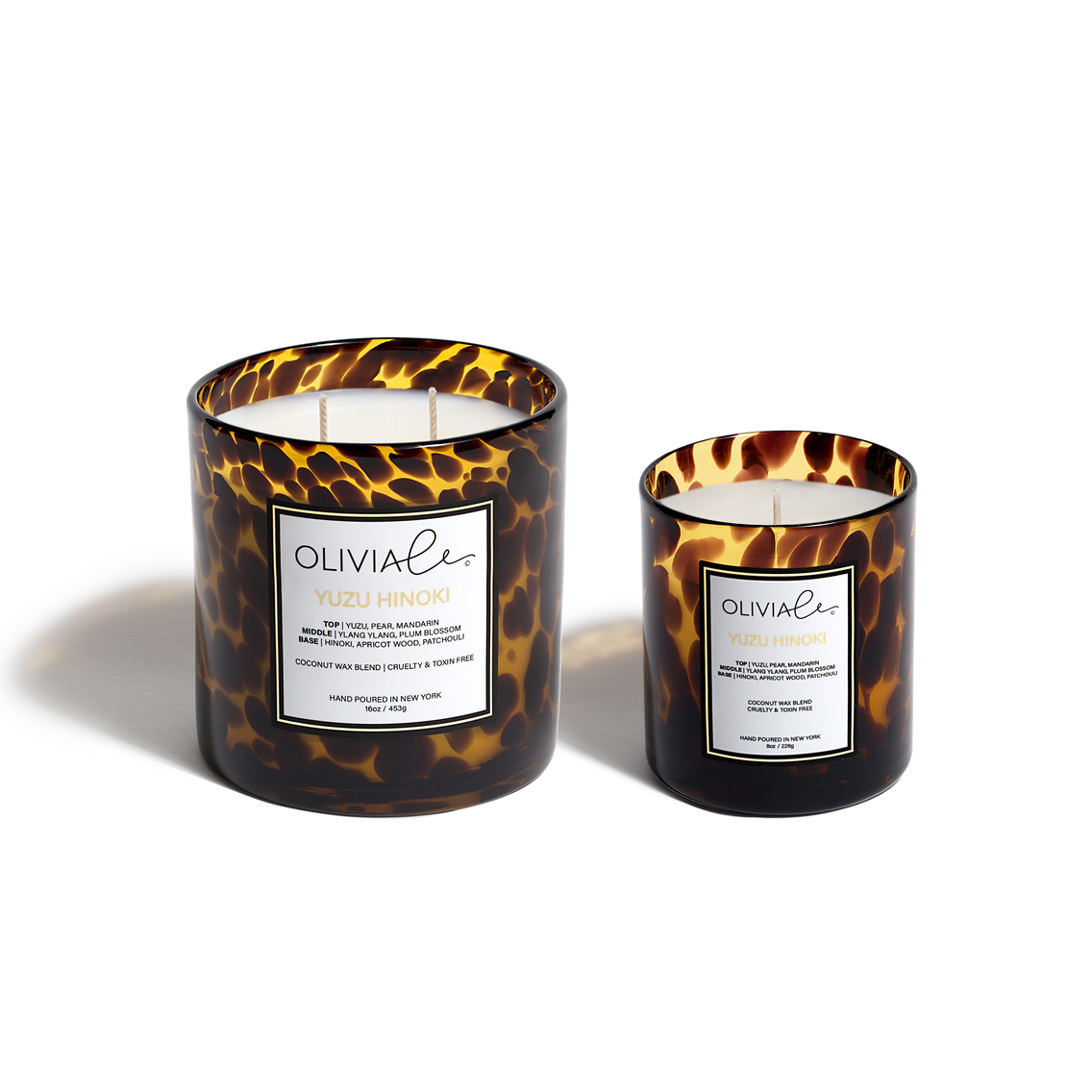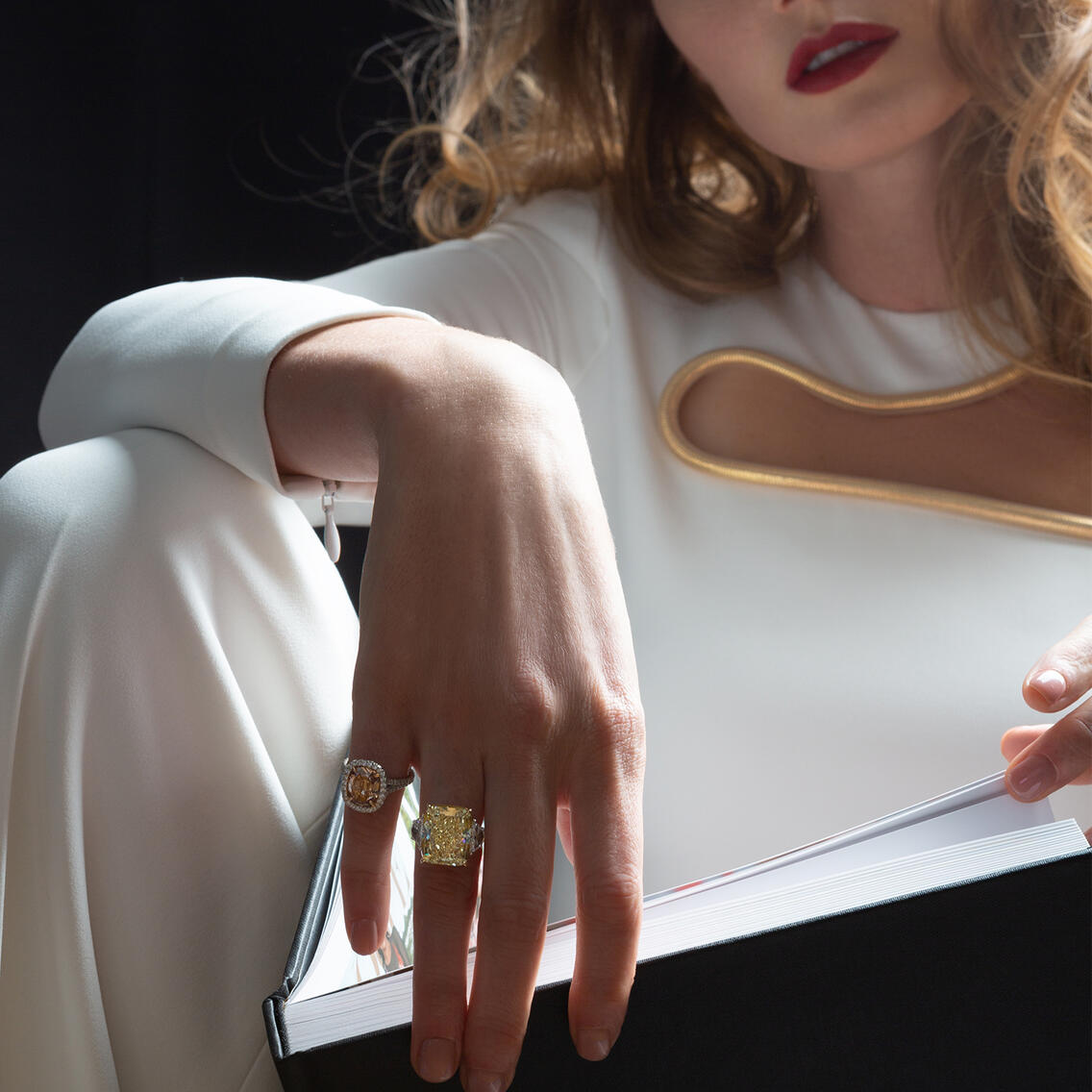What Is Set Design and Why Your eCommerce Photography Needs a Set Designer
Eye-catching product visuals are crucial in eCommerce, where attention spans are shorter than a TikTok video. Set design is the hidden ingredient that can transform your product photography from mundane to remarkable. It involves thoughtfully arranging props, colors, and lighting to create a cohesive visual narrative that resonates with your audience. The right set can make your products more appealing whether you’re selling bespoke jewelry or the latest tech gadget.
In this article, we’ll dive into the world of set design and explore why it’s an essential investment for any eCommerce business. We’ll break down what set designers do, how they collaborate with creative teams, and why their work is vital for an effective online presence. If you’re looking to enhance your product imagery and connect with customers on a deeper level, you’re in the right place.

The Role of Set Design in Commercial Visual Content Creation
The set design in commercial visual content production refers to the art and practice of creating the physical environments where visual narratives unfold, whether in photography, film, or advertising. This specialized field encompasses a range of activities aimed at crafting immersive settings that enhance storytelling and engage audiences.
At its core, set design involves a meticulous process of planning, designing, and constructing spaces that reflect the desired aesthetic and thematic elements of a project. Set designers work closely with directors and creative teams to interpret scripts or brand messages, ensuring that the visual context aligns with the overall vision. This collaboration is essential for translating abstract concepts into tangible environments that resonate with viewers.
How Set Design Drives Brand Storytelling in Product Photography
Set design provides the environment to convey a brand's narrative, establishing context that enhances the story being told. For instance, a handmade product in a rustic setting can evoke feelings of nostalgia and authenticity, while a sleek, modern environment may convey innovation and sophistication, which perfectly complements products like tech gadgets or minimalist fashion. By carefully selecting elements like colors, textures, and props, set designers create a space that aligns with the brand’s message and emotional tone.
Visual storytelling is inherently emotional. Set design plays a crucial role in eliciting feelings from the audience by creating atmospheres that reflect the brand's narrative. For example, warm lighting and cozy props can evoke comfort and familiarity, making viewers feel more connected to the brand. When consumers emotionally engage with a story, they are more likely to remember it and develop a stronger affinity for the brand.
One of its most underrated superpowers is the ability to make a single photoshoot feel like multiple shoots in one. With a well-thought-out set, you can create a variety of visual materials that cater to different marketing needs, all without having to pack up and move locations or start from scratch.
By strategically designing a versatile set, you can shift moods, angles, and focal points to produce a wide range of content. A single setup can seamlessly transition from a clean, minimalist look for product listings to a rich, lifestyle-driven scene for social media campaigns. Change the lighting, swap out a few props, or adjust the composition, and suddenly you’ve got entirely new visuals — all from the same shoot.
This flexibility not only saves time and budget but also ensures consistency across your visual assets. It’s like having multiple photoshoots rolled into one, giving you the freedom to experiment while still staying true to your brand’s aesthetic.
Set Design and Fashion: Elevating Editorial and E-commerce Visuals
Why Set Design Is Important for Fashion Industry Visual Content Production
In the fashion industry, set design is a crucial component that plays a significant role in conveying themes and narratives through visual storytelling. The right set design creates an atmosphere that complements clothing styles, enhancing the overall presentation and emotional impact of the visuals.
Set designers curate moods using a variety of elements, including props, furniture, and color palettes that resonate with current fashion trends. For instance, a minimalist set with clean lines can elevate high-fashion garments, allowing them to take center stage. Conversely, a vibrant and eclectic backdrop might be more appropriate for streetwear collections, reflecting the dynamic energy of urban culture. By thoughtfully integrating these elements, set designers help to create a cohesive visual identity that aligns with the brand’s message and target audience.
Moreover, effective set design allows for deeper storytelling in fashion editorials. Each element within the set can serve a purpose, whether it’s to evoke nostalgia, convey luxury, or highlight sustainability. For example, using vintage furniture in a shoot for a retro-inspired collection not only enhances the aesthetic but also reinforces the narrative behind the clothing. This synergy between set design and fashion helps to create memorable visuals that resonate with viewers long after they’ve seen them.
How Set Design Shapes Stunning Fashion Campaigns: Real-World Examples
Set design has become an integral part of fashion campaigns, providing the backdrop that enhances storytelling and elevates the overall aesthetic. Here are some notable examples from 2020 to 2025 that illustrate how set design has shaped stunning fashion campaigns.
1. Bottega Veneta - Fall/Winter 2020 Campaign

Bottega Veneta's FW20 campaign, shot by Tyrone Lebon, featured models illuminated by raw flashes of light against a snowy backdrop. The minimalist yet dramatic set evoked a sense of isolation and introspection, resonating with the collection's themes. The stark contrast between the models and the environment created a powerful visual narrative that emphasized the elegance and simplicity of the designs.
2. Gucci Tailoring - Fall 2020 Campaign

The Gucci Tailoring campaign featured an eclectic mix of celebrities, including Tyler, The Creator, and A$AP Rocky, set against vibrant backdrops that reflected Alessandro Michele's whimsical aesthetic. The set design incorporated colorful props and dynamic layouts that enhanced the playful nature of the campaign, making it not just a showcase of clothing but a celebration of individuality and self-expression.
3. JW Anderson - Spring/Summer 2021 Campaign

In this campaign, JW Anderson employed a dreamy set filled with pastel colors and oversized props, including tricycles and whimsical furniture. Shot by Tyler Mitchell, the playful environment complemented the collection’s soft aesthetic, creating a sense of childlike wonder. The surreal set design allowed the garments to shine while immersing viewers in a fantastical world that captured the essence of the brand.
4. Loewe Spring/Summer 2025 Campaign

The Spring/Summer 2025 campaign, shot by David Sims, exemplifies Loewe's connection to nature and the artistic presentation of its products. Set against the lush backdrop of Catalonia’s countryside, the campaign features models interacting with their environment — crinoline dresses hang from branches, and bags like the Madrid bag and Featherlight Puzzle are placed among natural elements such as leaves and soil.
The campaign also incorporates still-life photography that presents these bags and shoes as if they were part of a naturalistic performance, blurring the lines between fashion and art. The careful arrangement of products within their surroundings creates a ritualistic quality, inviting viewers to appreciate the craftsmanship and artistry behind each piece.
5. Balenciaga - Fall/Winter 2022 Campaign

In Balenciaga's FW22 campaign, still-life photography was used to present products in unconventional ways. The set design featured surreal elements, such as distorted mirrors and abstract shapes, creating a dreamlike quality that challenged traditional fashion norms. This innovative approach not only showcased Balenciaga’s avant-garde aesthetic but also engaged viewers by inviting them to interpret the visuals in multiple ways.
Great Uses of Set Design in Advertising: Lessons from Iconic Campaigns
1. Rhode's "Glazed Doughnut Skin" Campaign (2023)

The "Glazed Doughnut Skin" campaign showcased Rhode's skincare products with an emphasis on achieving a dewy, radiant look. The set design featured soft pastel colors and glossy surfaces that mimicked the aesthetic of glazed donuts. The products were arranged alongside playful props like actual donuts and vibrant sprinkles, creating a whimsical yet aspirational atmosphere. This clever integration of food elements not only highlighted the brand's unique positioning but also resonated with Gen Z's love for fun and nostalgia.
2. Adidas – "Ready for Sport" (2022)
Adidas launched this campaign with a bold set design featuring urban landscapes and dynamic sports environments. The visuals showcased athletes in action against striking backdrops — think graffiti-covered walls or rooftop courts — creating an energetic vibe that appealed to younger audiences. This approach not only highlighted product performance but also positioned Adidas as an integral part of street culture.
3. Patagonia – Environmental Focus

Patagonia’s product photography emphasizes its commitment to sustainability through thoughtful set designs that incorporate natural elements. By showcasing outdoor gear in rugged landscapes or serene natural settings, Patagonia reinforces its brand values while appealing to environmentally conscious consumers. This connection between product and environment enhances the narrative and emotional impact of the visuals.
4. Stüssy x Birkenstock - Solana Collaboration (2023)

The Stüssy and Birkenstock collaboration introduced the Solana sandal, featuring a unique slip-on design with plush shearling lining. The set design for the campaign, photographed by Antosh Cimoszko, included vibrant backgrounds that complemented the earthy tones of the sandals. The combination of textured surfaces and playful props created an inviting atmosphere that highlighted the comfort and style of the product. This approach not only showcased the sandals effectively but also reinforced the laid-back, casual vibe associated with both brands.
5. Cartier – Summer Campaign (2023)

Cartier's summer campaign featured a luxurious set design that beautifully showcased its exquisite jewelry pieces. The campaign utilized vibrant colors and natural elements, such as lush greenery and soft lighting, to create an inviting and elegant atmosphere. The set design enhanced the visual appeal of the jewelry, allowing the pieces to shine against a backdrop that evoked a sense of summer luxury and sophistication. This approach not only highlighted the craftsmanship of Cartier's products but also created an aspirational lifestyle narrative that resonated with viewers.
What Your Business Can Learn from These Ad Set Design Success Stories
- Embrace Storytelling: Use set design to tell a compelling story that resonates with your audience.
- Be Bold and Imaginative: Don’t shy away from creative concepts that push boundaries. Fresh ideas can capture attention and differentiate your brand.
- Create Relatable Environments: Authentic settings can make your products feel more accessible and relevant to consumers' lives.
- Highlight Cultural Relevance: Incorporate elements that reflect current trends or cultural movements. This relevance can enhance engagement with target audiences.
- Utilize Color and Texture: Vibrant colors and interesting textures can bring energy to your visuals.
- Encourage Interaction: Create immersive experiences that invite viewers to engage with your brand on multiple levels - whether through social media interactions or experiential marketing events.
What is a Set Designer in Creative Commercial Photography?
A set designer in commercial visual content production is a creative professional who specializes in crafting the visual environments used to showcase products in online retail settings. Unlike traditional set designers who work primarily in theater or film, eCommerce set designers focus on creating engaging and aesthetically pleasing backgrounds that enhance product photography and videography for digital platforms.
Their role involves understanding the brand's identity and target audience, allowing them to design sets that not only highlight products but also tell a compelling story. This storytelling aspect is crucial in eCommerce, as it helps to create an emotional connection with potential customers, making the shopping experience more immersive.
Set designers in this field utilize various elements to create a cohesive look that aligns with the brand's message. They are adept at transforming spaces into visually appealing environments that can adapt to different marketing needs — essentially allowing multiple visual narratives to emerge from a single set.
In summary, a set designer in eCommerce enhances product presentation through thoughtful and creative visual design, ultimately driving engagement and sales for online retailers.
What Does a Set Designer Do? Exploring Their Role in Visual Content Creation
Conceptualizing and Sketching Preliminary Designs for Visual Projects
The journey of a set designer begins with conceptualization. They take the creative director’s guidelines and transform them into preliminary designs that serve as the foundation for their visual projects. This process often starts with brainstorming sessions, where designers collaborate with creative teams to better understand the vision and goals for the shoot.
- Sketches: Set designers create initial sketches that outline their ideas. These drawings capture the layout, key elements, and overall vibe of the set, providing a visual reference that guides further development.
- Mood Boards: Mood boards are essential tools for conveying the aesthetic and emotional tone of projects. Together with a creative director, they curate images, textures, colors, and materials that align with the brand’s identity, allowing all stakeholders to visualize the intended atmosphere.
- Floor Plans: Detailed floor plans are crafted to provide specific information about the layout of the set. These plans outline where each element will be placed, ensuring that the design is functional and conducive to shooting.
- Set Elevations and 3D Renders: To offer a comprehensive view of the set from multiple perspectives, designers sometimes create set elevations and 3D renders. These visualizations help producers and directors understand how different elements interact within the space.
Prop Sourcing and Crafting: Finding and Making the Perfect Details
Props are crucial in set design as they add depth and context to product photography. Set designers source or create unique details that enhance storytelling.
The selection of props requires careful consideration of how each item contributes to the narrative. For example, a vintage suitcase might evoke wanderlust for a travel brand, while sleek gadgets could emphasize modernity for tech products.
Props serve as visual cues that help convey messages about products or brands. They can evoke emotions, highlight features, or create relatable scenarios that resonate with consumers. Small details like a cozy blanket draped over a chair can significantly impact how viewers perceive a product's lifestyle context.
The right props can enhance the narrative around a product, making it more relatable to consumers. For instance, a luxurious watch might be paired with minimalist decor to emphasize elegance, while toys could be surrounded by vibrant colors to evoke fun. Careful selection of props ensures that they complement rather than distract from the main subject.
Aligning Set Design with Brand Aesthetics and Marketing Goals
A successful set designer understands that their work must align with both brand aesthetics and marketing objectives. This alignment ensures that every visual element contributes to a cohesive narrative that resonates with the target audience.
Designers must have the ability to understand the brand’s identity: its values, target market, and its overall messaging. This knowledge informs every decision made during the design process, from color choices to prop selection.
Set designers also consider how their designs can support specific marketing goals. Whether the brand is aiming to boost engagement on social media or drive conversions on an eCommerce site, every aspect of the set must be tailored to achieve these objectives.
Stage A Mood and Create Composition with Set Design
The mood of a production can shift throughout a photoshoot, and it’s up to the set designer to support these transitions effectively. Composition involves arranging elements within the frame to create specific feelings: order or chaos, warmth or coolness. A well-composed set can guide viewers’ emotions and responses to the product being showcased. As scenes evolve during a shoot, set designers may need to adapt their designs quickly. This flexibility ensures that each shot aligns with the intended emotional tone, whether it’s joyful, serene, or dramatic.
Lighting is arguably one of the most crucial aspects of set design. It sets the mood, highlights products, and adds depth to images. Different lighting techniques can evoke various emotions: soft, natural light often creates a warm and inviting atmosphere, while harsh lighting can introduce drama or emphasize textures. Effective use of lighting helps ensure that products are showcased in their best light, literally and figuratively. A set designer always considers the creative director's lighting guidance in their work.
Color significantly influences how viewers perceive images and can evoke specific emotions or associations. In advertising and commercial photographs, color choices should align with brand identity and target audience preferences. For example, warm colors like red can create a sense of urgency, while cooler tones like blue may convey trust and calmness. Thoughtful color palettes enhance visual storytelling by reinforcing the intended message.
Setting Photography Background
The background sets the scene for product photography and can either enhance or detract from the focal point. A cluttered or busy background can distract viewers, while a simple or thoughtfully designed backdrop can highlight the product effectively. Choosing backgrounds that support the product's story is crucial for creating impactful visuals that resonate with audiences.
Flexible Design for Camera Movement Safety on Set
Safety is paramount in any production environment. Set designers must ensure that their designs accommodate camera movement while maintaining stability. From breakable items to heavy set pieces, everything on the set must be secure. Designers work closely with production teams to identify potential hazards and communicate safety protocols effectively. Beyond aesthetics, sets should cater to technical requirements such as lighting setups and camera angles. Designers must create spaces for smooth camera movement without compromising safety or visual quality.
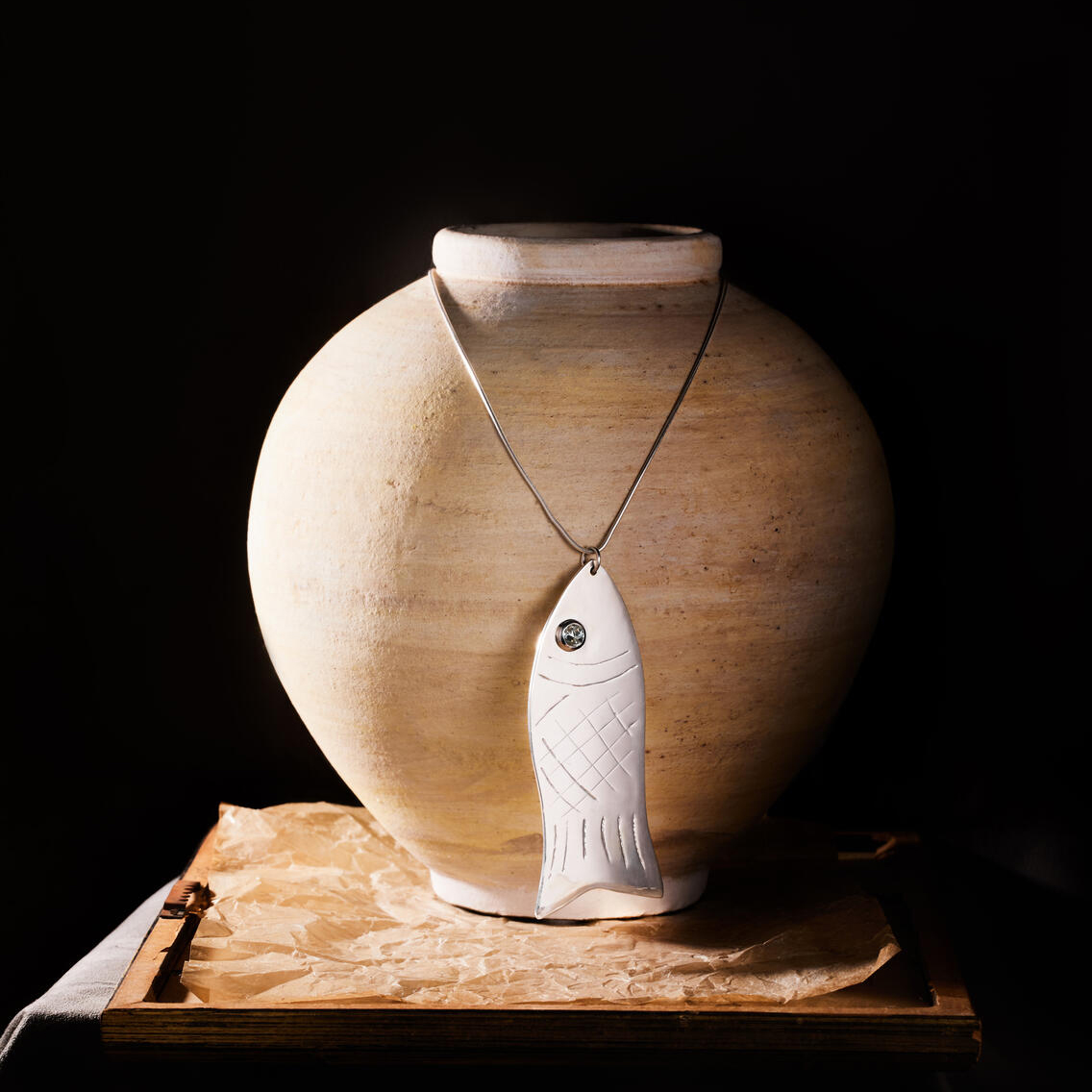
Set Designer’s Role in the Commercial Visual Content Production Team
In the intricate world of visual content creation, collaboration is key, and set designers play a vital role within the broader production team. Their ability to work seamlessly with various professionals ensures that every visual element aligns with the overall execution of the project. Here’s a closer look at how set designers collaborate with other team members and contribute to the success of a production.
Set designers begin their journey by collaborating closely with directors and creative leaders. This partnership is crucial, as the director’s vision shapes the narrative and aesthetic of the project. Set designers interpret this vision, translating it into tangible designs that enhance storytelling. They engage in discussions about themes, moods, and specific requirements for each scene, ensuring that their designs support the overall narrative arc.
The set designer’s role involves understanding how the set will function within the story. This requires active listening and adaptability, as directors may have specific ideas about how they want scenes to unfold. By maintaining open lines of communication, set designers can make informed decisions that align with the director's goals while also bringing their own creative insights to the process.
In addition to working with directors, set designers collaborate extensively with various production teams, including art directors, cinematographers, and lighting technicians. This teamwork is essential for ensuring that all visual elements come together cohesively.
Art Directors: Often serving as the second-in-command to creative directors, art directors oversee specific aspects of set design. Set designers work alongside them to ensure that the overall aesthetic is consistent across different sets.
Cinematographers: The relationship between set designers and cinematographers is particularly important when it comes to lighting and camera angles. Set designers must consider how their designs will interact with lighting setups and how different angles will affect the visual presentation of the set. By collaborating closely, they can create environments that not only look good but also photograph well.
Lighting Technicians: Lighting plays a critical role in set design, influencing mood and atmosphere. Set designers must work with lighting technicians to understand how different light sources will interact with their designs. This collaboration ensures that the set is designed to accommodate various lighting techniques, enhancing the overall visual impact of each scene
Producers: Collaboration with producers is essential for balancing creativity with financial realities. Set designers must be mindful of costs when selecting materials and props, ensuring that their designs are both visually appealing and financially feasible. This requires a strong understanding of budgeting processes and effective communication skills to negotiate solutions that satisfy both creative ambitions and budget limitations.
Related Read: Understanding the eCommerce Photography Creation Process and Team Involvement
The Essential Role of Set Design in Still Life Photography
Set design is a fundamental aspect of still-life photography that transforms ordinary product photos into visually captivating compositions. By carefully considering elements such as props, textures, and lighting, photographers can create images that not only showcase products but also tell a story and evoke emotions.
Why Set Design Is the Foundation of Stunning Still Life Photography
Set design serves as the backbone of still-life photography, providing the context and environment that elevate the subject matter. Here’s how set design contributes to creating stunning visuals:
- Effective set design can turn mundane objects into compelling subjects. By thoughtfully arranging items, incorporating complementary props, and using creative backgrounds, photographers can create a narrative that draws viewers in. For example, a simple bottle of olive oil can be transformed into a gourmet product by placing it in a rustic kitchen setting with herbs and wooden utensils.
- In still life photography, it’s crucial to balance aesthetics with functionality. The set design should enhance the product's features without overshadowing them. This balance allows for clear visibility of product details while maintaining an engaging visual appeal. For instance, using soft, neutral backgrounds can help highlight the colors and textures of a product without distraction.
- Thoughtful set design adds depth to images through layers and varying heights. By arranging objects at different levels or using foreground and background elements, photographers can create a sense of three-dimensionality that makes the composition more dynamic and interesting.
Creative Set Design for E-Commerce Products
In e-commerce, effective set design is crucial for showcasing products in a way that attracts consumers and encourages purchases.
The use of props can enhance the narrative around a product. For example, when photographing skincare products, incorporating items like fresh flowers or natural elements can evoke feelings of freshness and purity, aligning with the brand's message.
Textures add visual interest and can influence how products are perceived. A rough wooden surface can suggest rustic charm for artisanal goods, while sleek marble might convey luxury for high-end products. Mixing different textures within the set design helps create a contrast that draws attention to the main subject.
Examples of Minimalist vs. Elaborate Still Life Set Designs
- Minimalist Set Design:
Example: A clean white backdrop with a single product centered on a simple pedestal.

This approach emphasizes clarity and focus on the product itself, making it ideal for brands that want to convey simplicity and elegance (e.g., high-end skincare brands).
- Elaborate Set Design:
Example: A richly textured background featuring various props that relate to the product.

This style creates an immersive environment that tells a story about the product’s lifestyle appeal (e.g., luxury fragrances or home decor).
Elevate Your Product Visuals with Creative Product Photography
Want your products to captivate customers at first glance? LenFlash specializes in commercial photography that turns your items into works of art. Our expert team combines professional set design, precision lighting, and advanced photography and retouching to create visuals that reflect your brand’s story and leave a lasting impression. From luxury goods to everyday essentials, we tailor every detail to highlight your product’s unique features and make it stand out in a crowded market. Let’s create visuals that don’t just sell but inspire. Explore LenFlash Photography today!
